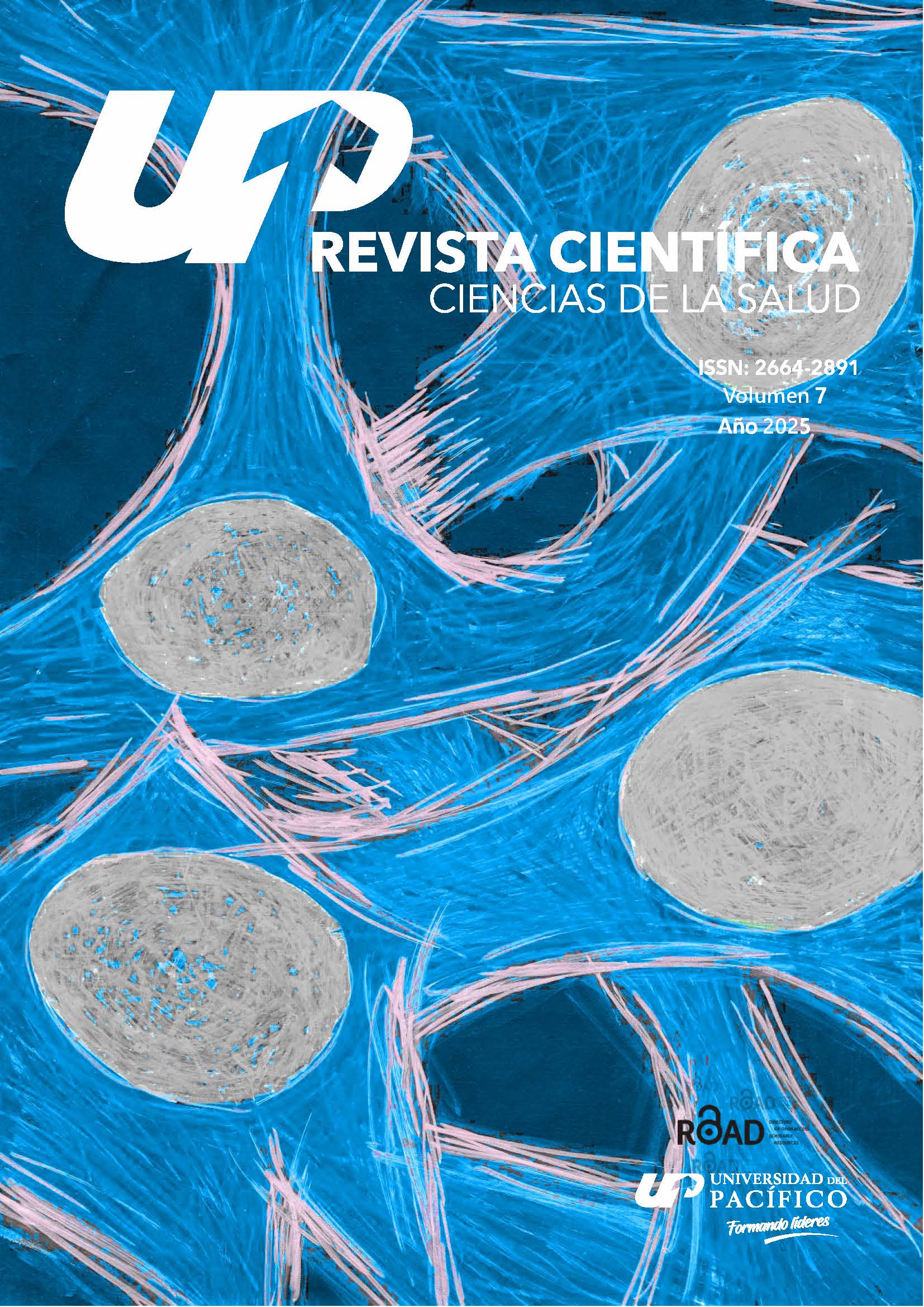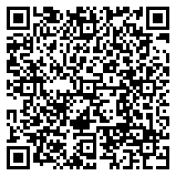Conductas repetitivas orientadas al cuerpo y su asociación con síntomas de depresión, ansiedad y estrés en estudiantes de medicina paraguayos: un estudio transversal
DOI:
https://doi.org/10.53732/rccsalud/2025.e7114Palabras clave:
conductas repetitivas orientadas al cuerpo, depresión, ansiedad, estrés, estudiantes de medicina, paraguayResumen
Introducción. Las conductas repetitivas orientadas al cuerpo (BFRB, por sus siglas en inglés), como la tricotilomanía y el trastorno de excoriación, afectan significativamente la calidad de vida, el bienestar psicológico y el rendimiento académico. Sin embargo, la investigación sobre su asociación con síntomas de salud mental en estudiantes de medicina paraguayos es limitada. Objetivo. Describir la frecuencia de BFRB en estudiantes de medicina y su asociación con síntomas de depresión, ansiedad y estrés. Materiales y Métodos. Estudio observacional con 158 estudiantes de medicina de Paraguay, seleccionados mediante muestreo no probabilístico por conveniencia. Se utilizaron instrumentos validados en español, como la Skin Picking Scale-Revised, la Massachusetts General Hospital Hair Pulling Scale y la Depression Anxiety Stress Scale-21. Las asociaciones entre variables se evaluaron con la prueba de chi cuadrado (nivel de significancia del 5 %). Resultados. La prevalencia del trastorno de excoriación fue del 22,8 % y la de tricotilomanía del 7 %. El 63,3 % de los estudiantes presentó depresión, el 62,7 % ansiedad y el 56,3 % estrés. La depresión aumentó nueve veces las probabilidades de trastorno de excoriación (OR = 9,03; p < 0,001), mientras que la ansiedad (OR = 4,9; p < 0,001) y el estrés (OR = 5,34; p < 0,001) también mostraron asociaciones significativas. La tricotilomanía no se asoció con estos síntomas. Conclusión. La alta prevalencia de BFRB y su asociación con síntomas de salud mental subraya la necesidad de intervenciones específicas en estudiantes de medicina para mejorar su bienestar psicológico y rendimiento académico.
Citas
Torales J, Ruiz Díaz N, Ventriglio A, Castaldelli-Maia JM, Barrios I, García O, et al. Hair-pulling disorder (Trichotillomania): Etiopathogenesis, diagnosis and treatment in a nutshell. Dermatol Ther. 2021;34(1):e13466. https://doi.org/10.1111/dth.14366.
Torales J, Ruiz Díaz N, Barrios I, Navarro R, García O, O'Higgins M, et al. Psychodermatology of skin picking (excoriation disorder): A comprehensive review. Dermatol Ther. 2020;33(4):e13661. https://doi.org/10.1111/dth.13661.
Houghton DC, Alexander JR, Bauer CC, Woods DW. Body-focused repetitive behaviors: More prevalent than once thought? Psychiatry Res. 2018;270:389-393. https://doi.org/10.1016/j.psychres.2018.10.002.
Tucker BT, Woods DW, Flessner CA, Franklin SA, Franklin ME. The Skin Picking Impact Project: phenomenology, interference, and treatment utilization of pathological skin picking in a population-based sample. J Anxiety Disord. 2011;25(1):88-95. https://doi.org/10.1016/j.janxdis.2010.08.007.
Abdulghani HM, AlKanhal AA, Mahmoud ES, Ponnamperuma GG, Alfaris EA. Stress and its effects on medical students: a cross-sectional study at a college of medicine in Saudi Arabia. J Health Popul Nutr. 2011;29(5):516-522. https://doi.org/10.3329/jhpn.v29i5.8906.
Siddiqui EU, Naeem SS, Naqvi H, Ahmed B. Prevalence of body-focused repetitive behaviors in three large medical colleges of Karachi: a cross-sectional study. BMC Res Notes. 2012;5:614. https://doi.org/10.1186/1756-0500-5-614
Quek TT, Tam WW, Tran BX, Zhang M, Zhang Z, Ho CS, et al. The Global Prevalence of Anxiety Among Medical Students: A Meta-Analysis. Int J Environ Res Public Health. 2019;16(15):2735. https://doi.org/10.3390/ijerph16152735
Torales J, Kadhum M, Zárate G, Barrios I, González I, Farrell SM, et al. Wellbeing and mental health among medical students in Paraguay. Int Rev Psychiatry. 2019;31(7-8):598-602. https://doi.org/10.1080/09540261.2019.1667172
Torales J, Malatesta E, editores. Psicodermatología: una actualización diagnostica y terapéutica de las entidades clínicas más frecuentes. 1ª ed. Asunción: EFACIM; 2019. 341 p.
Sailly S, Khanande RV, Munda SK, Mehta VS. Body-focused repetitive behaviors in school-going children and adolescents and its relationship with state-trait anxiety and life events. Indian J Psychiatry. 2020;62(6):703-706. https://doi.org/10.4103/psychiatry.IndianJPsychiatry_607_19
Lochner C, Roos A, Stein DJ. Excoriation (skin-picking) disorder: a systematic review of treatment options. Neuropsychiatr Dis Treat. 2017;13:1867-1872. https://doi.org/10.2147/NDT.S121138
Lee J, Won S, Chang SM, Kim BS, Lee SJ. Prevalence of Addictive Behaviors in Medical Students and Their Association With Stress. Psychiatry Investig. 2022;19(1):44-53. https://doi.org/10.30773/pi.2021.0096
Torales JC, Malatesta EM, González LL, González IA, López RD, Barrios JI, et al. Psicodermatología: una introducción a sus conceptos, nosología y modelos de abordaje. An. Fac. Cienc. Méd. (Asunción). 2020;53(2):127-136. https://doi.org/10.18004/anales/2020.053.02.127
Ramezani G, Norouzi A, Arabshahi SKS, Sohrabi Z, Zazoli AZ, Saravani S, et al. Study of medical students' learning approaches and their association with academic performance and problem-solving styles. J Educ Health Promot. 2022;11:252. https://doi.org/10.4103/jehp.jehp_900_21.
Barber KE, Cram IF, Smith EC, Capel LK, Snorrason I, Woods DW. Anxiety and body-focused repetitive behaviors: A systematic review and meta-analysis of comorbidity rates and symptom associations. J Psychiatr Res. 2025;181:80-90. https://doi.org/10.1016/j.jpsychires.2024.11.062
Torales J, Barrios I. Diseño de investigaciones: algoritmo de clasificación y características esenciales. Med. clín. soc. 2023;7(3):210-235. https://doi.org/10.52379/mcs.v7i3.349
Barrios I, Jafferany M, Ruiz Diaz N, Castaldelli-Maia JM, Ventriglio A, Torales J. Psychometric properties of the Spanish version of the Skin Picking Scale-Revised (SPS-R). J. Obsessive Compuls. Relat. Disord. 2020;27:100586. https://doi.org/10.1016/j.jocrd.2020.100586
Keuthen NJ, O'Sullivan RL, Ricciardi JN, Shera D, Savage CR, Borgmann AS, et al. The Massachusetts General Hospital (MGH) Hairpulling Scale: 1. development and factor analyses. Psychother Psychosom. 1995;64(3-4):141-145. https://doi.org/10.1159/000289003
Kłosowska J, Sznajder D, Antosz-Rekucka R, Tuleja A, Prochwicz K. Reliability, Validity and Factor Structure of the Polish Version of the Massachusetts General Hospital Hair Pulling Scale. Cogn. Ther. Res. 2024;48:4-17. https://doi.org/10.1007/s10608-023-10428-y
Brown TA, Chorpita BF, Korotitsch W, Barlow DH. Psychometric properties of the Depression Anxiety Stress Scales (DASS) in clinical samples. Behav Res Ther. 1997;35(1):79-89. https://doi.org/10.1016/s0005-7967(96)00068-x
Ruiz FJ, García Martín MB, Suárez Falcón JC, Odriozola González P. The Hierarchical Factor Structure of the Spanish Version of Depression Anxiety and Stress Scale. Int. J. Psychol. Psychol. Ther. 2017;17(1):97-105. https://blogs.konradlorenz.edu.co/files/ruiz-f.-j.-garc%C3%ADa-mart%C3%ADn-m.-b.-su%C3%A1rez-falc%C3%B3n-j.-c.-odriozola-gonz%C3%A1lez-p.-2017-1.pdf
Barrios I, Miltos V, Piris A, Piris G, Ramírez C, Rodríguez J, et al. Tamizaje de salud mental mediante el test M.I.N.I. en estudiantes del ciclo básico de medicina de la Universidad Nacional de Asunción. An. Fac. Cienc. Méd. (Asunción). 2015;48(1):59-68. https://doi.org/10.18004/anales/2015.048(01)59-068.
Muñoz Navarro SR. ¿Cuántos sujetos necesito para mi estudio?. Medwave. 2014;14(6):e5995. https://doi.org/10.5867/medwave.2014.06.5995.
Melese B, Bayu B, Wondwossen F, Tilahun K, Lema S, Ayehu M, et al. Prevalence of mental distress and associated factors among Hawassa University medical students, Southern Ethiopia: a cross-sectional study. BMC. Res. Notes. 2016;9:485. https://doi.org/10.1186/s13104-016-2289-7
Mahgoub Y, Daher-Nashif S, Al-Shebly R, Wali HS, Khan A, Almarkhi A, et al. Prevalence and Determinants of Mental Health Problems and Mental Health Stigma Among Medical Students of Different Nationalities in Qatar. Adv. Med. Educ. Pract. 2022;13:969-979. https://doi.org/10.2147/AMEP.S371053
Torales J, Barrios I, Barrios J, Báez-Osorio H, Sánchez-Piris E, Ortigoza-Alves E, et al. Medical Students Training and Mental Health: An Exploratory Study. Med. clín. soc. 2023;7(2):52-60. https://doi.org/10.52379/mcs.v7i2.284.
Gadi N, Saleh S, Johnson JA, Trinidade A. The impact of the COVID-19 pandemic on the lifestyle and behaviours, mental health and education of students studying healthcare-related courses at a British university. BMC Med Educ. 2022;22(1):115. https://doi.org/10.1186/s12909-022-03179-z.
Hale EW, Davis RA. Supporting the future of medicine: Student mental health services in medical school. Front Health Serv. 2023;3:1032317. https://doi.org/10.3389/frhs.2023.1032317.
Tondehal NR, Kumar V, Reddy JM, Srinivas M, Sasikala T. Assessment of Mental Health Status Among Medical Graduates During COVID-19 Lockdown Period: A Cross-Sectional Study. Natl J Lab Med. 2021;10(4):18-20. https://doir.org/10.7860/NJLM/2021/50227:2549.
Olum R, Nakwagala FN, Odokonyero R. Prevalence and Factors Associated with Depression among Medical Students at Makerere University, Uganda. Adv Med Educ Pract. 2020;11:853-860. https://doi.org/10.2147/AMEP.S278841.
Simpson V, Halpin L, Chalmers K, Joynes V. Exploring well-being: medical students and staff. Clin Teach. 2019;16(4):356-361. https://doi.org/10.1111/tct.13080
Kihumuro RB, Kaggwa MM, Nakandi RM, Kintu TM, Muwanga DR, Muganzi DJ, et al. Perspectives on mental health services for medical students at a Ugandan medical school. BMC Med Educ. 2022;22(1):734. https://doi.org/10.1186/s12909-022-03815-8
Descargas
Publicado
Cómo citar
Número
Sección
Licencia
Derechos de autor 2025 Revista científica ciencias de la salud

Esta obra está bajo una licencia internacional Creative Commons Atribución 4.0.






















 Todo el contenido de esta revista, está bajo
Todo el contenido de esta revista, está bajo 